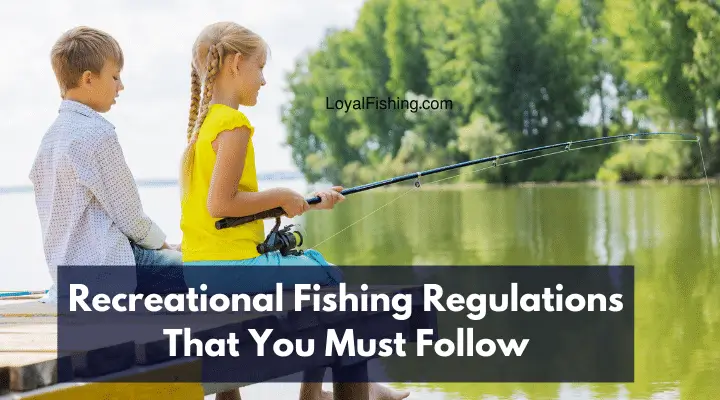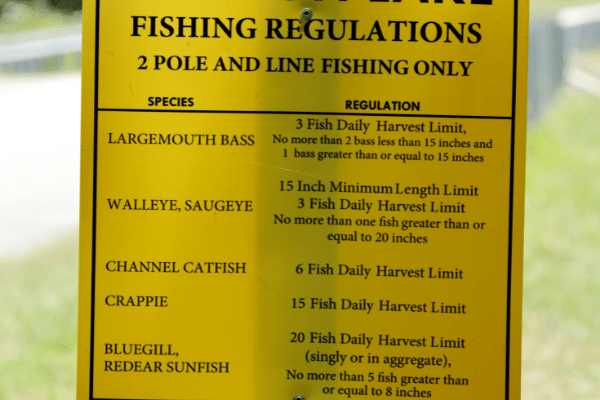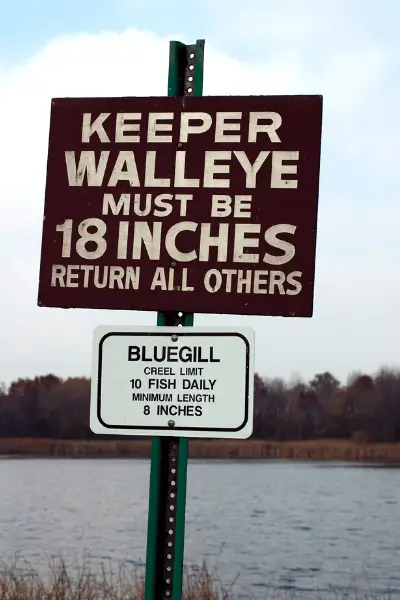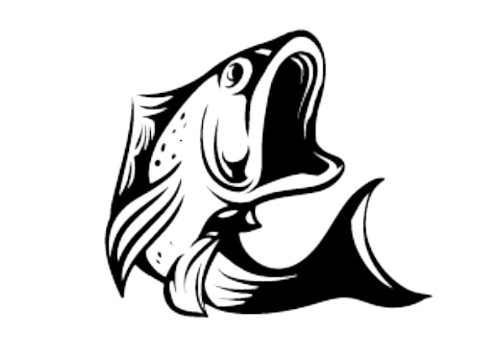Recreational Fishing Regulations That You Must Follow

In many parts of the world, fishing is a popular recreational activity. Whether you’re fishing in a freshwater lake or in the ocean, there are certain regulations that you need to follow in order to ensure that you’re fishing responsibly.
In general, recreational fishing regulations are designed to protect fish populations so that they can be enjoyed by future generations. For example, many jurisdictions have catch limits in place, which means that you can only keep a certain number of fish per day.
There may also be restrictions on the types of fishing gear that you can use. For example, in some areas, it’s illegal to use live bait because it can harm the environment.
It’s important to familiarize yourself with the recreational fishing regulations in the area where you’ll be fishing. By doing so, you can help to ensure that fish populations remain healthy for years to come.
What Comes in The Recreational Fishing Regulations

The United States has a long and proud tradition of recreational fishing. In fact, many of our nation’s founding fathers were avid anglers. George Washington, Thomas Jefferson, and Benjamin Franklin all loved to fish, and they helped to establish some of the earliest fishing regulations in the United States.
Today, recreational fishing is one of the most popular outdoor activities in the country. Millions of Americans enjoy fishing every year, and the vast majority do so responsibly.
However, as with any outdoor activity, there are always a few bad apples that ruin it for everyone else. That’s why it’s important to know and follow the rules when it comes to recreational fishing.

Here are a few of the most important things to remember:
1. Get a fishing license
In most states, you need a fishing license to recreationally fish. You can usually get a license at your local bait and tackle shop, or online.
2. Follow the size and catch limits
Most states have the size and catch limits in place for certain fish species. These limits are designed to ensure that fish populations remain healthy and sustainable. Make sure you know the limits for the area you’re fishing in, and don’t exceed them.
3. Use the proper gear
Using the proper fishing gear is important for both the safety of the fish and the angler. In general, you should use a rod and reel, and a line that is appropriate for the type of fish you’re trying to catch.
4. Be respectful of other anglers and boaters
When you’re out on the water, remember that you’re sharing the space with other anglers and boaters. Be respectful of their space and don’t try to crowd them.
5. Pick up your trash
When you’re done fishing for the day, make sure to pick up all of your trash, including any fishing line or lures that you may have lost. Leaving trash behind is not only disrespectful, but it can also be harmful to the environment.
6. Follow the rules
Finally, it’s important to remember that the rules exist for a reason. They’re designed to protect the fish, the anglers, and the environment. So please, follow the rules and help to keep recreational fishing safe and enjoyable for everyone.
In order to acquire the individual fish rules and regulations, you can follow this article on Mass.gov
FAQs Regarding Recreational Fishing Regulations:
What are the general requirements for recreational fishing?
There is no universal answer to this question as different jurisdictions have different requirements, but in general, most jurisdictions require a fishing license for anyone wishing to recreationally fish in their waters. Some exceptions to this rule include Indigenous people and children, who are often exempt from needing a license.
In addition to a license, fishermen are typically required to follow certain regulations with regards to the type and size of fish they are allowed to catch, as well as the number of fish they are allowed to take home. These regulations vary from place to place and are meant to ensure the sustainability of fish populations.
What are the bag limits for recreational fishing?
The bag limits for recreational fishing depend on the type of fish being caught, the location, and the season. For example, in Florida, the bag limit for snook is two per person per day, while the bag limit for tarpon is one per person per day.
What are the size limits for recreational fishing?
The size limits for recreational fishing vary by state but are generally between 10 and 20 inches.
What methods are allowed for recreational fishing?
Recreational fishing methods are typically those that are used for sport or pleasure, as opposed to those used for commercial purposes. Some common recreational fishing methods include angling (fishing with a rod and line), bait fishing (fishing with bait), fly fishing (fishing with a fly), and ice fishing (fishing on the ice).
What are the catch and release requirements for recreational fishing?
Catch and release is an approach within recreational fishing intended as a tool of conservation. Behind the fish is caught, it is unhooked and produced into the water. The approach is credited with helping to improve fish populations and, as a result, the quality of fishing.
What are the seasons and closed areas for recreational fishing?
There are four seasons for recreational fishing: Spring, Summer, Fall, and Winter. Each season has its own specific areas that are closed to fishing, so be sure to check the regulations before heading out.
What are the requirements for a recreational fishing license?
There is no single answer to this question as requirements for a recreational fishing license can vary depending on the state or country in which you are fishing. In general, however, most jurisdictions require that you be a certain age (usually 16 or 18), have a valid ID, and have completed a certified boating or fishing safety course. Some states also require that you purchase a fishing license before you can fish recreationally.
What types of bait and tackle are for recreational fishing?
There is no one answer to this question as different types of bait and tackle can be used for recreational fishing, depending on the type of fish being caught. However, some common baits used for recreational fishing include live bait, such as worms or minnows, as well as artificial lures, such as spinners or spoons. The type of tackle used will also vary depending on the type of fish being caught, but common tackle used for recreational fishing includes hooks, line, and sinkers.
Conclusion
The best way to ensure that we can continue to enjoy recreational fishing into the future is to follow the regulations that are in place. By doing this, we help to protect the fish populations and the environment.
In conclusion, recreational fishing regulations are necessary to protect our fisheries and ensure that everyone has a fair chance at catching fish. These regulations help to ensure that fish populations remain healthy and that the experience of fishing is enjoyable for everyone.
